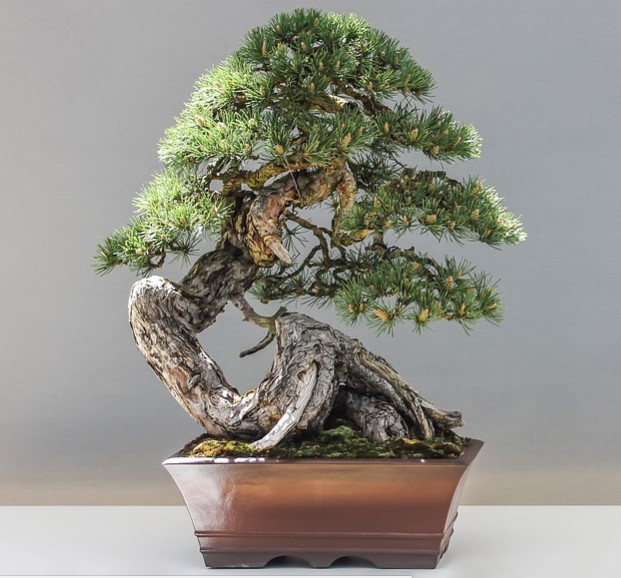Bonsai Styles Guide
Bonsai styles guide – Bonsai, as a Japanese art kind, is more regulated than it’s Chinese equivalent, the penjing. Bonsai tries to attain the perfect tree, while penjing efforts to replicate nature. This is why best styling exists in bonsai if you comply with the ‘guidelines’, while penjing leave you totally free to your production. As an outcome these are the standard designs:
Casual Upright (Moyogi).
This design is extremely much like the formerly mentioned design as the very same guidelines of style use, nevertheless, the trunk is not straight however rather forms a sinuous shape while staying tapered. This design is typically utilized with conifers.
Broom (Hokidachi or Hoki-zukuri).
An extremely unified design, this type has branches that establish at a particular height, forming an advantage broom. This styling is primarily accomplished through a strategy called the “V” cut. The trunk is sliced where you desire the branch to begin to establish and after that a deep V cut is carried out on the staying trunk. This will cause buds to break near the cut. Zelkova serrata are infamous for this styling however maple and other deciduous types can quickly be styled that method.
Inclining (Shakan).
When once again, this design is the very same as the official upright other than that the trunk is leaning on one side. Branches are grown consistently on the trunk like the formal/informal upright designs however the pinnacle is slanted to the opposite side of the trunk providing a visual well-balanced result.
Waterfall (Kengai).
This styling needs a likely trunk that is ideally at a 45 degree angle. The significant part of the foliage is listed below the pot line and often exceeds the pot itself. It frequently represents a tree growing on the side of cliff. A deep pot is utilized for this design.
Official Upright (Chokkan).
A tree styled the “chokkan” method has a straight trunk tapering happily from bottom to top. The very first and greatest branch is frequently positioned at 1/3 of the wanted height of the tree and is on the right or the. The following branch is positioned on the opposite side, while the 3rd remains in the back producing the understanding depth. As we take a look at the branch structure from bottom to leading, the branches are getting thinner, producing a pyramidal shape.
Semi-cascade (Han-Kengai).
Just like the Kengai design, this design likewise has actually an inclinated trunk. The foliage stays at the height of the pot line. In nature, we can see this design near a waterway, the foliage having actually grown on the side and leaning to the water. While the waterfall design utilizes a much deeper pot, this design utilizes a medium depth pot.
Literati (Bunjin).
This styling is frequently represented in Japanese paintings. It is a tree with a sinuous and high trunk. The foliage just grows near the top of the tree. Since it does not have particular guidelines, this styling is rather an exception to the strenuous guidelines of bonsai. It represents exactly what the bunjin motion remains in Japan: the look for liberty.
Roots Over Rock (Ishitsuki).
This styling has the particular characteristics of having numerous noticeable roots growing over a rock and discovering their method to the pot/soil.
Windswept (Fukinagashi).
A “windswept” tree represents a tree that has actually been growing in a specific shape due to natural components. Typically triggered by strong wind, the trunk is constantly inclined in a particular instructions and all branches have actually grown on the exact same side.
Group/Forest (Yose-ue).
This styling frequently represents a forest or a little cluster of trees. It is expected to be styled in such a way that will plainly represent the growing routines of trees in a group. Numerous techniques can be utilized to attain this styling and numerous understanding methods are utilized to produce the impression of a forest, or as Naka would state, “having the quality of the unnoticeable appeal of nature”. To appreciate the Japanese art type, an odd variety of trees is chosen for this styling.
Multi-trunk Style (Sokan – Sankan).
This multi-trunk design has various possibilities. The very first, which is called “Sokan”, includes 2 trunks emerging from the exact same noticeable roots (nebari). The styling of the upper part of the tree need to appreciate the very same guidelines as the official/ casual upright designs formerly explained. Another difference includes the very same however with 3 trunks emerging from the noticeable roots. This is called “Sankan”. You can likewise have more than 3 trunks however to appreciate Japanese bonsai, it is chosen to have an odd variety of trunks.
Raft (Ikadabuki).
The exact same guidelines of the group planting use to this design. All of the trunks emerge from one typical trunk. This method is typically accomplished with a branch put verticaly in the soil. The roots form this branch and the upper part of the vertical branch establish secondary branches that will ultimately end up being the trunks.

